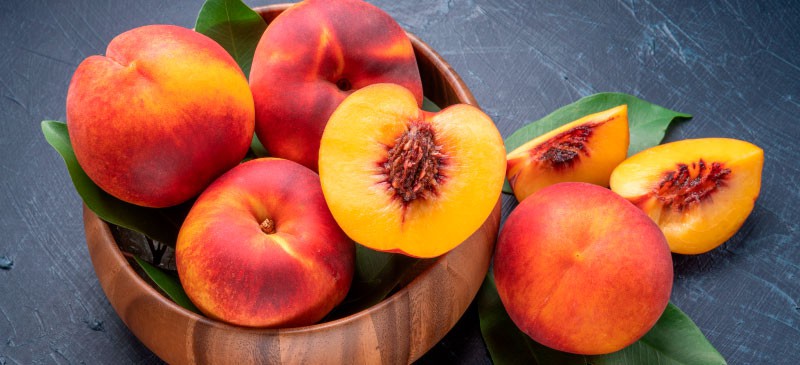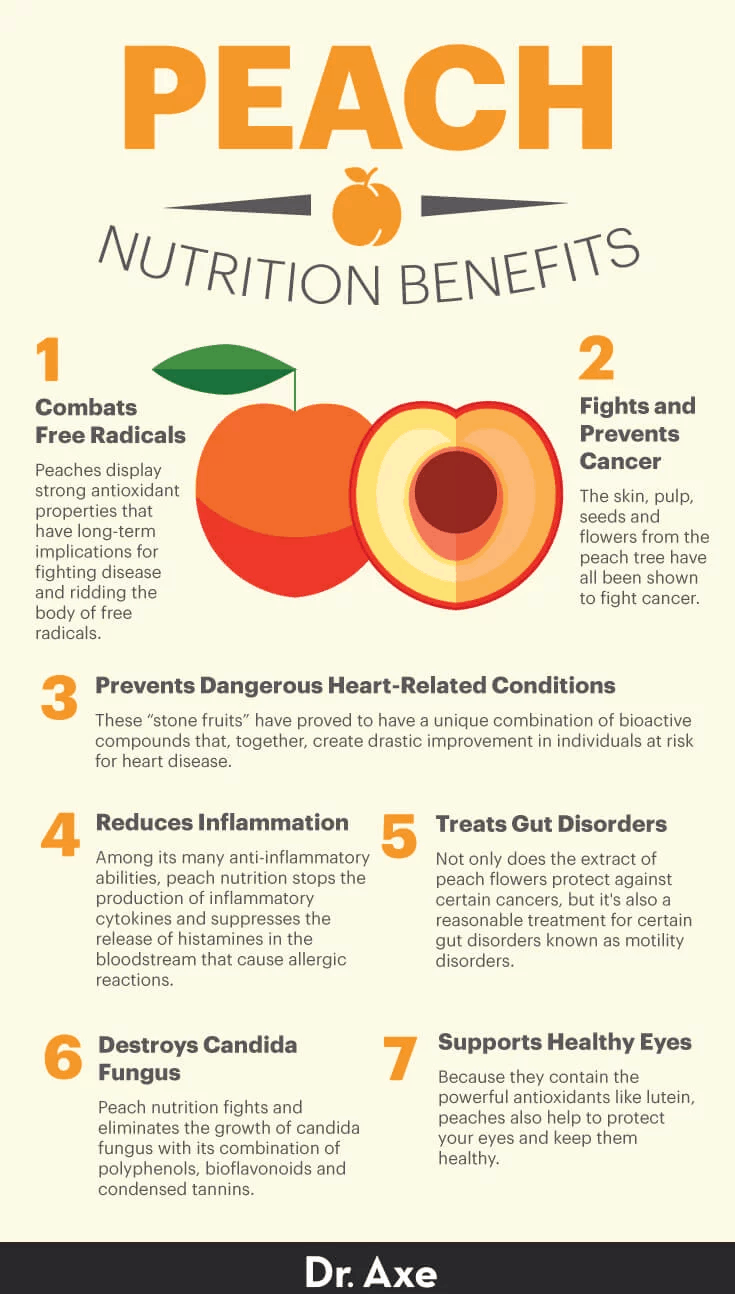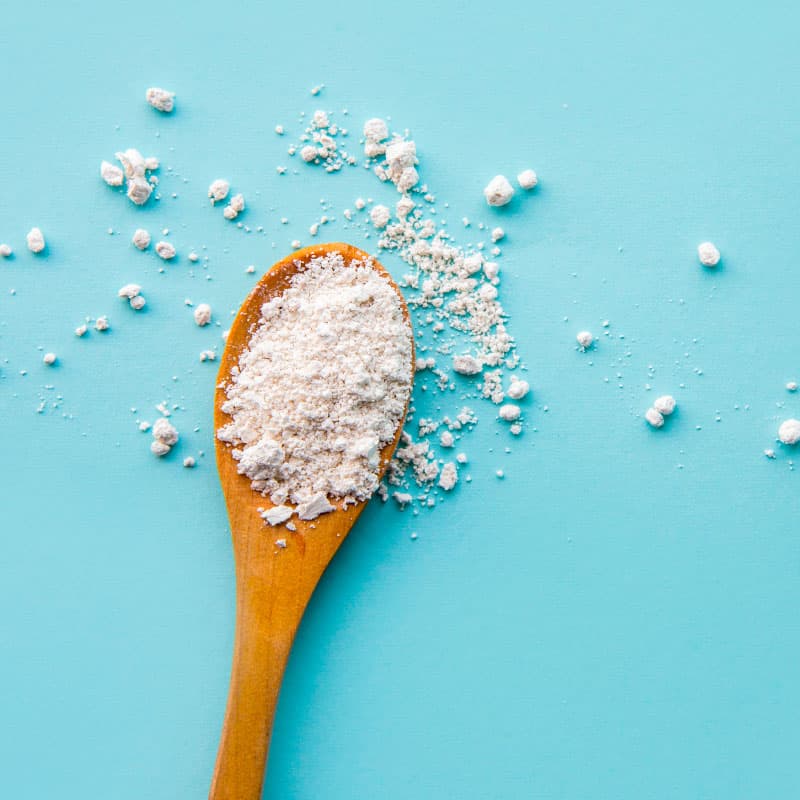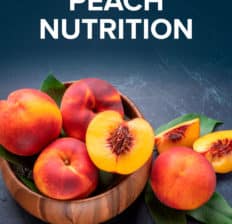This Dr. Axe content is medically reviewed or fact checked to ensure factually accurate information.
With strict editorial sourcing guidelines, we only link to academic research institutions, reputable media sites and, when research is available, medically peer-reviewed studies. Note that the numbers in parentheses (1, 2, etc.) are clickable links to these studies.
The information in our articles is NOT intended to replace a one-on-one relationship with a qualified health care professional and is not intended as medical advice.
This article is based on scientific evidence, written by experts and fact checked by our trained editorial staff. Note that the numbers in parentheses (1, 2, etc.) are clickable links to medically peer-reviewed studies.
Our team includes licensed nutritionists and dietitians, certified health education specialists, as well as certified strength and conditioning specialists, personal trainers and corrective exercise specialists. Our team aims to be not only thorough with its research, but also objective and unbiased.
The information in our articles is NOT intended to replace a one-on-one relationship with a qualified health care professional and is not intended as medical advice.
Peach Nutrition: Heart-Healthy, Gut-Friendly and Downright Delicious
July 1, 2024

You should learn to love your peach fuzz — and no, I’m not referring to the facial hair. Peaches are a valuable source of nutrition, and peach nutrition helps your body fight free radicals, prevent cancer and protect your heart from disease.
Native to China, the peach has been around for millennia and is considered a succulent, tasty fruit for use in different kinds of dishes all over the world, but the benefits don’t just stop at taste.
Peaches are high-antioxidant foods that have anti-inflammatory and antifungal properties, which is why peach nutrition offers a slew of impressive health benefits.
What Are Peaches?
Peaches are part of the genus Prunus, which includes the cherry, apricot, almond and plum. It’s also part of the subgenus Amygdalus along with the almond, as they’re both distinguished by their corrugated seed shells.
The peach is known officially as Prunus persica, earning its unique name from the journey it took from its location of origin, China, through Persia via the Silk Road to Europe.
There are three basic varieties of peaches freestone (in which the peach pulp does not cling to the hull), clingstone (where the inner pulp holds tight to the hull) and the less well-known flat or “Saturn peach.” Also sometimes referred to as the doughnut peach, the Saturn peach is flatter and less fuzzy than standard peaches.
Both common peach types can be cultivated with a white or yellow peel, each of which has flecks or lines of red in the skin. The white varieties tend to have a sweeter, less acidic taste and are popular mostly in Asian countries.
Europeans and Americans tend to prefer the yellow-skinned, more tart varieties.
A common question people have about peaches is, “Are peaches similar to nectarines?” The answer to that is yes.
Actually, peaches and nectarines are identical fruits genetically, save one genetic allele that causes nectarines to have a smooth, fuzz-free peel. Nectarines are not, as some people believe, a cross between a peach and a plum.
Although its scientific name speaks of Persia, the peach most likely originated from China. Peach cultivation has been recorded in ancient Chinese records dating back as far as 1100 B.C., making way to the western parts of Europe by around 300 B.C., and were a popular Roman food in the first century A.D.
The Americas were introduced to peaches around the 1500s when they were brought by Spanish settlers, and England and France finally began appreciating their delicious benefits by the mid-1600s.
In 2010, researchers from the U.S., Italy, Chile, Spain and France gathered at a consortium to present findings of the International Peach Genome Initiative, a study into the exact genome of the peach and the takeaways regarding different peach varieties and how they differ.
Peaches aren’t as widely produced as some similar fruits because they require a dry, temperate climate in which to grow. This makes them ill-suited for tropical climates except when grown in high altitudes.
China is the largest producer of the peach, growing over half of the peaches throughout the world. It’s followed in production by Italy, Spain, the U.S. and Greece.
Far from being just a favorite fruit, peach trees, fruits and blossoms are regarded with high esteem in Chinese culture, both historically and today. The Chinese believe the different facets of the peach tree to be responsible for warding off evil spirits, protecting a person’s life and health, and bringing peace.
Peach seeds have been used for many centuries as a part of Chinese medicine to treat various conditions, such as blood stasis, inflammation and allergies.
Peaches also have a special place in artwork, both in realism and symbolic pieces. Monet, Rubens and Van Gogh are among the many artists to depict various parts of the peach tree and fruit.
Peach Nutrition Facts
In addition to its many vitamins and minerals, low calorie content, and, of course, delicious flavor, peach nutrition also comes packed with great antioxidants, including all five classifications of carotenoids.
As a great source of vitamin A and vitamin C, plus beneficial fiber, it’s no wonder peaches are such a powerful fruit when it comes to maintaining optimal health and fighting disease.
One medium, raw, yellow peach (about 150 grams) contains approximately:
- Calories: 58.5
- Total Carbohydrates: 14.3 g
- Fiber: 2.3 g
- Sugar: 12.6 g
- Total Fat: 0.4 g
- Saturated Fat: 0.03 g
- Polyunsaturated Fat: 0.1 g
- Monounsaturated Fat: 0.1 g
- Protein: 1.4 g
- Vitamin C: 9.9 mg (11%–13% DV*)
- Potassium: 285 mg (8%–11% DV)
- Vitamin A: 24 mcg (3% DV)
*Daily Value: Percentages are based on a diet of 2,000 calories a day.
Benefits of Peaches
1. Combat free radicals
One of the greatest qualities in peach nutrition is the high quantity of antioxidants found in these delicious fruits. Peaches display strong antioxidant properties that have long-term implications for fighting disease and ridding the body of free radicals.
When free radicals are able to bounce around in your various body systems, they can wreak all kinds of damage, known as oxidative stress, and contribute to disease and cell breakdown on many levels.
A diet heavy in antioxidants is your best, natural defense against the damage caused by free radicals. In fact, many fruit juices (including freshly squeezed peach juice) can begin the process of relieving oxidative stress in just 30 minutes after you consume them.
As with many types of food, the specific variety of peach determines the exact antioxidant load. In addition, the part of the peach you like to consume also impacts how much of the antioxidative benefit you get from eating peaches.
Research indicates a higher level of antioxidants in the peel versus the pulp, for example. You’ll also find better nutrient content in fresh peaches, as peach preserves and peach syrup contain very little of what makes peaches so beneficial.
Caffeic acid is an antioxidant specifically found in high levels in peach nutrition. It protects the body from the dangerous carcinogenic mold aflatoxin that’s often found in certain types of food like peanuts, corn and peanut butter.
More than any other antioxidant tested, caffeic acid destroyed the production of aflatoxin, reducing it by 95 percent.
2. Help fight and prevent cancer
Like so many whole, fresh foods, peaches have been strongly linked to the prevention and regression of various cancers, placing them among some of the best cancer-fighting foods around.
According to a 2014 study by researchers at Texas A&M, polyphenols in peaches (and plums) successfully inhibited the growth and metastasis (spreading to other organs) of at least one strain of breast cancer cells. They recommend breast cancer patients eat two to three peaches a day to experience the same cancer-protective effects.
Another study by the same university found that not only do these polyphenols slow breast cancer growth, but they also kill those same cancer cells without causing any healthy cells to die.
Caffeic acid, the antioxidant found so richly in peaches, can inhibit a type of fibrosarcoma, a tumor that grows in fibrous connective tissue. Certain colon cancers are also stunted in their growth by the consumption of peaches and similar fruits.
It’s not just the pulp and skin that are so beneficial in the peach’s fight against cancer. In traditional Asian medicine, the seed of the peach has been used for millennia in the treatment of many diseases.
In 2003, scientists found that the compounds in peach seeds can reduce the growth of papilloma (tumors) on the skin and slow their carcinogenesis, the process by which benign tumors develop into cancer.
Your skin can also benefit from the flowers of the peach tree. Peach flower extract, through antioxidation, protects your skin from UV damage and the development of skin cancer.
Peach nutrition also offers help alongside the use of the common chemotherapy drug cisplatin. One dangerous side effect of this type of chemo is hepatotoxicity, which refers to chemical-induced liver damage.
When cisplatin was administered alongside peach skin, however, the degree to which the liver was damaged was drastically reduced in one 2008 study in Korea.
3. Can help prevent dangerous heart-related conditions
Peaches (along with plums and apricots) offer hope for preventing and helping deal with metabolic syndrome and cardiovascular disease. These “stone fruits,” termed as such because of their large inner seed shells, have a unique combination of bioactive compounds that, together, create drastic improvement in individuals at risk for heart disease.
While all of the antioxidants, anti-inflammatory nutrients, and other vitamins and minerals in peaches may be found in other foods, researchers believe the fusion of the specific levels of these nutrients is what makes them so special.
Various facets of metabolic syndrome can be improved by consuming stone fruits, including diabetes, cholesterol, inflammation and weight gain. One study examined the effect of replacing sugary drinks with natural fruit juices high in polyphenols and found it had a significant impact on cardiovascular disease risk factors.
One study of over 1,300 people in China tested the effect of higher bioflavonoid consumption from fruits, including peaches, and found that, especially in women, the subjects’ lipid profiles all showed improvement. This means that the risk factors for heart disease that are tested from the blood, such as cholesterol levels, improved across the board.

4. Help reduce inflammation
Because inflammation is at the root of most diseases, it’s helpful to know that peaches and other fruits like it help decrease inflammation levels in the body. Among its many anti-inflammatory abilities, peach nutrition stops the production of inflammatory cytokines and suppresses the release of histamines in the bloodstream that cause allergic reactions.
Fresh pulp and peel from peaches have serious fighting power against inflammation that causes cell death in the body, making peaches excellent anti-inflammatory foods.
5. Can help relieve gut disorders
Not only does the extract of peach flowers protect against certain cancers, but it also can help with certain gut disorders known as motility disorders. Motility is the contraction of the muscles that mix and expel materials within your gastrointestinal tract.
Motility disorders include things like gastroesophageal reflux disease (GERD), constipation, diarrhea and many others. Peach flower extract is an effective prokinetic agent that increases the frequency and/or strength of contractions in the GI tract while maintaining their proper rhythm.
6. Can destroy candida fungus
As mentioned above, what gives peaches their power isn’t only the presence of individual nutrients, but the bioactive compounds that result from the combination of the specific amounts of nutrients they provide.
This is also true in explaining the peach’s potency against candida symptoms, the most common yeast infection. Peach nutrition fights and eliminates the growth of candida fungus with its combination of polyphenols, bioflavonoids and condensed tannins.
7. Support healthy eyes
Because they contain the powerful antioxidants like lutein, peaches also help protect your eyes and keep them healthy. The carotenoids build up in the macular tissue of your eyes and help prevent macular degeneration, an age-related cause of blindness and blurred vision caused by damage to macular cells.
8. May help balance blood sugar
While more research is needed in humans, research on mice shows that peach leaf extract can suppress glucose absorption from the small intestine. This, in turn, helped lower blood sugar levels in mice with elevated blood glucose levels.
Researchers believe the multiflorin in peach leaf extract is responsible for this blood sugar-lowering effect.
9. Could protect against toxins
Research published in 2017 revealed that white-fleshed peaches “may increase the metabolism of toxic components in tobacco smoke in smokers and protect normal tissues against nicotine toxicity in mice. Therefore, supplementation of white-fleshed peaches might be beneficial to smokers.”
This could mean peaches help protect against other toxins as well, helping protect people from all sources of environmental invaders.
10. Help manage allergy symptoms
It appears that peaches can help manage and reduce allergic reactions because they can prevent the release of histamines into the bloodstream. In fact, test-tube studies confirm peaches display anti-allergic inflammatory activity.
11. Protect skin health
As revealed in a 2021 study published in Antioxidants, a unique acylated kaempferol glycoside with a rare structure was isolated from peach nutrition for the first time. This compound was shown in-vitro and in a mouse model to possess anti-wrinkles capabilities.
Researchers believe it is a promising cosmeceutical formulation for skin care.
That’s not all. Peach gum polysaccharides have been shown to help prevent UVB-induced skin photoaging.
Furthermore, in a 2017 study, three experiments were performed to examine the effects of a peach-derived glucosylceramide on human skin health. The experiments found that human ceramide contents increased, water retention functions of skin improved, trans-epidermal water loss was suppressed and skin texture improved by the peach extracts.
As a result, the study authors concluded that “the present data indicate the positive effects of peach ceramide on skin function and no adverse effects.”
Uses
While it’s not uncommon to chill peaches, it’s important to know that you run the risk of losing some of the peach nutrition when doing so. While the carotenoid antioxidants remain stable, the vitamin C content drops when stored at low temperatures.
If you do choose to freeze your peaches, it’s a good idea to use a teaspoon of lemon juice on them to prevent browning while being stored.
A “climacteric” fruit, the peach continues to ripen after being picked. Many commercial growers pick peaches well before they’re ripe in order to ship them farther before they ripen.
When at all possible, you should purchase peaches from a local farmers market to ensure the freshest, most ethically grown product possible.
If you buy unripe peaches, you can ripen them most safely by laying them out in one level on your kitchen counter for one to three days. And be careful — even slight pressure variations can bruise the peach skin.
At room temperature, peaches can be expected to last about a week after ripening.
Depending on what type of dish you plan to make, you may want to use less ripe peaches. For example, unripe, crisp peaches toss well in salads, whereas overripe peaches are great for baked goods.
Canning peaches is another way people frequently enjoy peaches — however, again, this risks losing nutritive value. Canned peaches lose about 21 percent of their antioxidant load.
The seed of a peach, shaped like an almond and found inside the peach hull, tastes similar to the almond with a slightly more bitter scent. Some research indicates that peach seeds in particular have fairly impressive health benefits, but further research is needed.
Recipes
Looking for ways to enjoy peaches? Here are some peach recipes to try:
Risks and Side Effects
While peach nutrition is an excellent addition to your diet, it’s possible to have an allergy to peaches and other similar fruits. The usually mild reaction most people experience is known as oral allergy syndrome and is often treated by no longer eating the offending food and managing the allergy like a seasonal allergy, such as pollen.
As a fruit, peaches probably should be consumed earlier in the day rather than later because of the way the sugar content in them is processed. At least one study found a correlation between nighttime peach consumption and a higher body mass index and body weight.
There also are trace amounts of cyanide in peach seeds. Mathematically, it would be impossible to consume enough peach seeds in a small enough period of time to actually hurt yourself — however, it’s always a good idea to do everything in moderation.
If you choose to try eating peach seeds, do it responsibly, and report any adverse reaction to your doctor immediately.
Final Thoughts
- Peaches are a delicious, readily available fruit that are full of valuable nutrients.
- The nutritional value of peaches is found in the highest concentration when peaches are purchased locally and eaten without chilling or freezing, taking advantage of both the peel and the pulp.
- The carotenoids and other antioxidants in peach nutrition help fight diseases and conditions like cancer, macular degeneration and candida albicans.
- As a fruit, peaches are best eaten earlier in the day rather than in the evening.
- There are two common varieties of peaches, freestone and clingstone. Both contain the same nutritive value.
- Peach cobbler is a win-win for everyone, especially when it’s made with life-giving ingredients.










